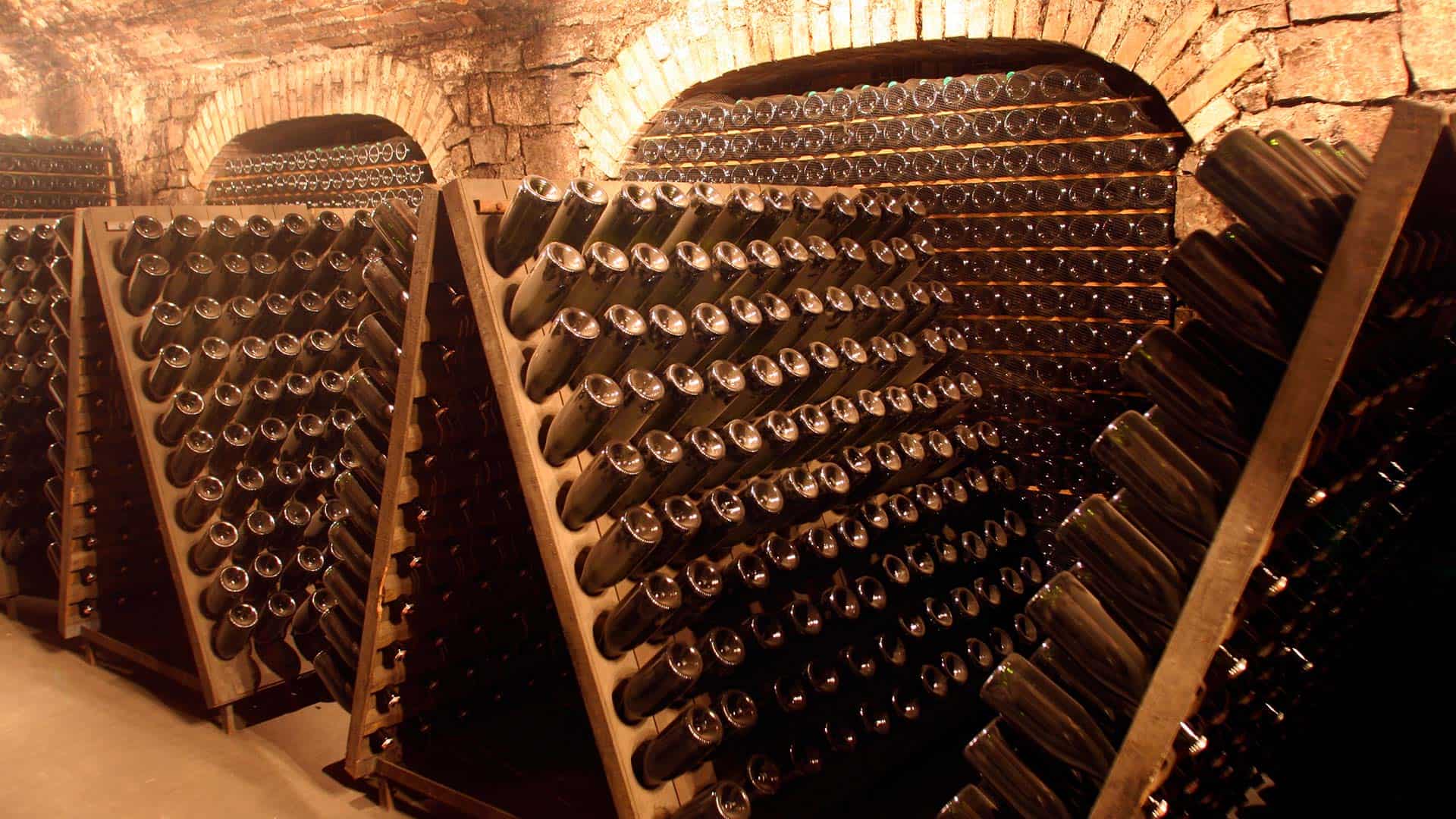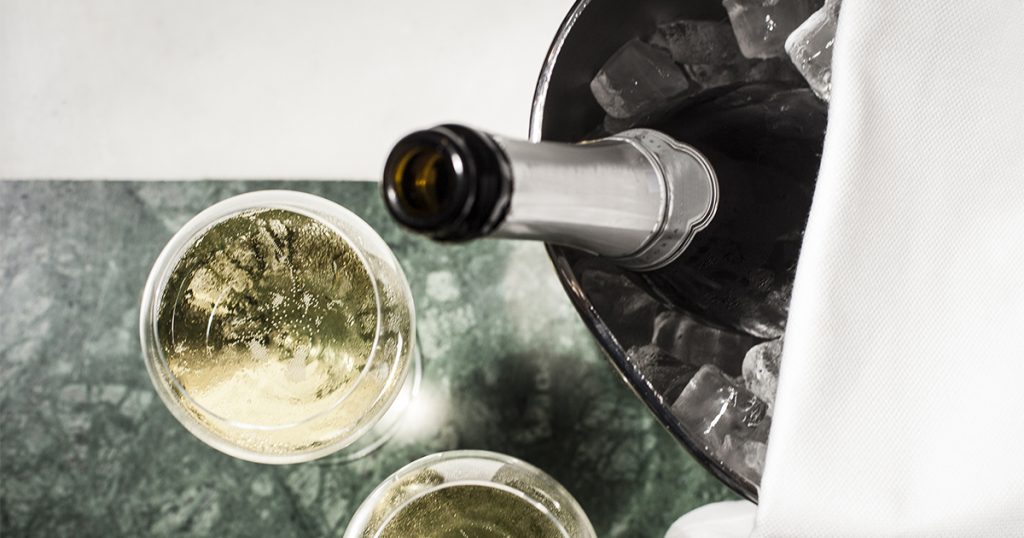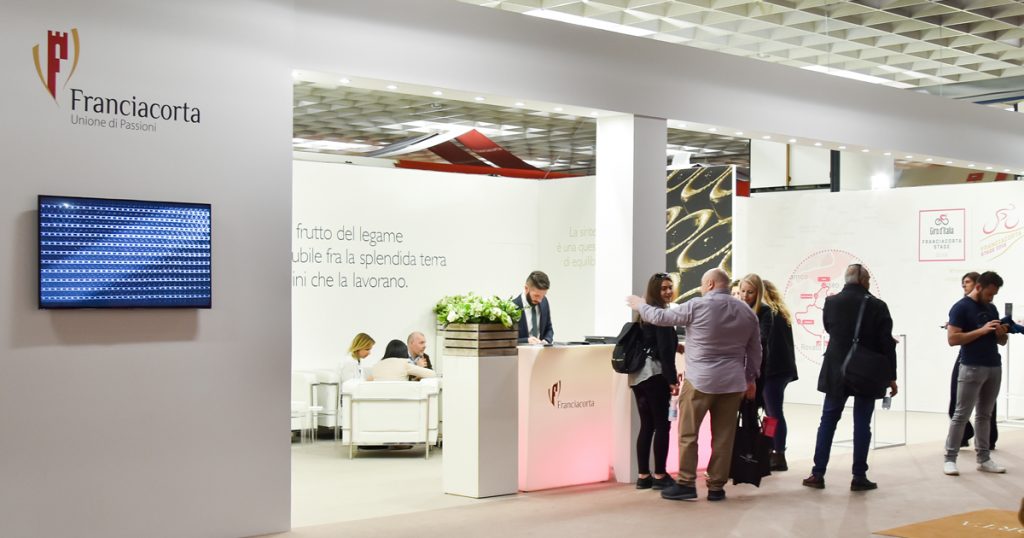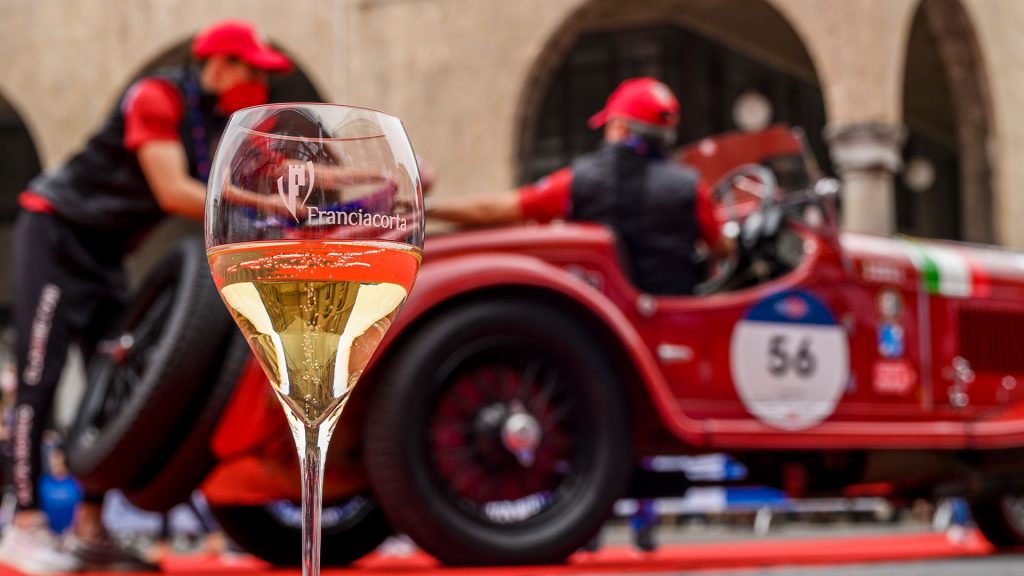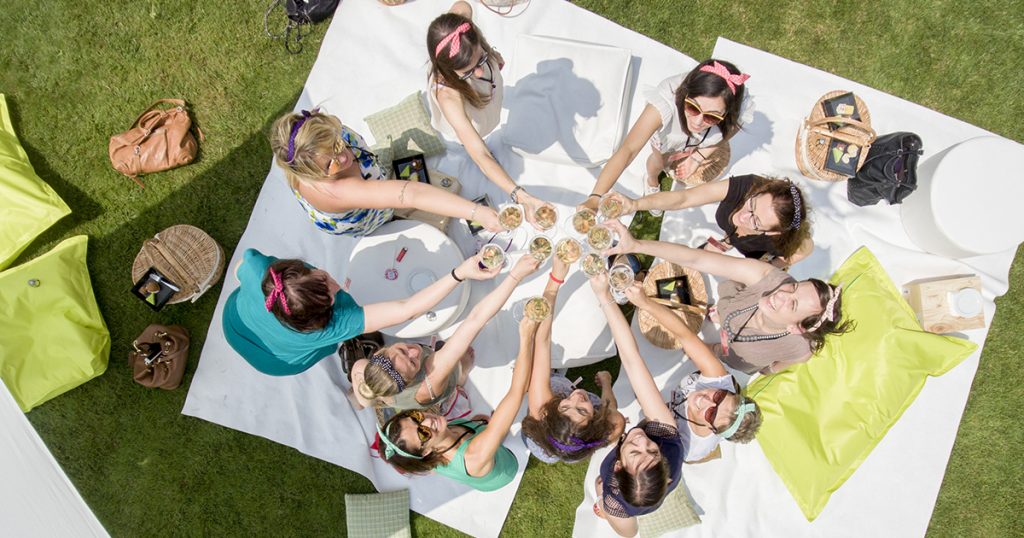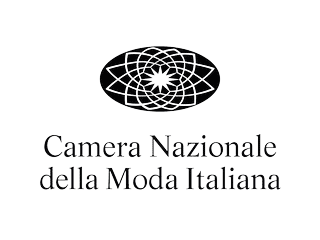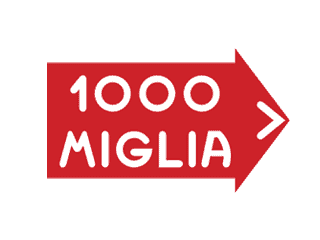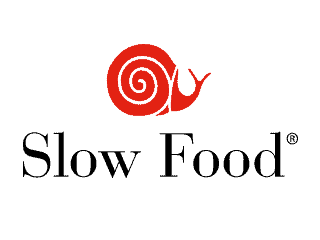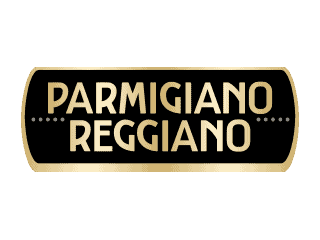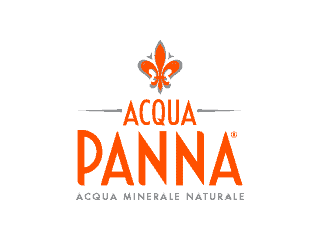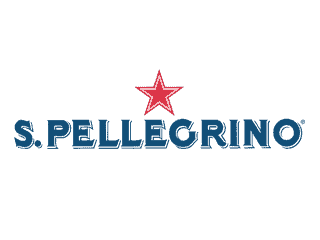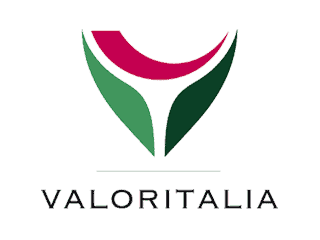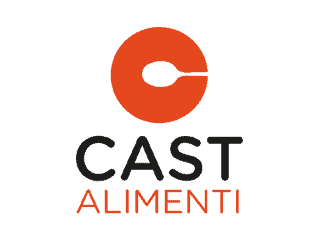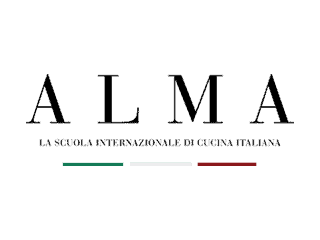A quality guarantee
The regulations are a legally binding document setting out the Franciacorta DOCG winemaking rules.
Franciacorta’s producers have worked hard over many years to draw up quality safeguards for its wines. These regulations are some of the world’s strictest in its production category of reference.
| Approved DOC with DPR 21.07.1967 | G.U. 209 – 21.08.1967 |
| Approved DOCG with DM | G.U. 249 – 24.10.1995 |
| Error correction | G.U. 288 – 11.12.1995 |
| Modified with DM 02.09.1996 | G.U. 217 – 16.09.1996 |
| Modified with DM 07.04.2004 | G.U. 93 – 21.04.2004 |
| Modified with DM 25.06.2008 | G.U. 157 – 07.07.2008 |
| Modified with DM 08.09.2008 | G.U. 223 – 23.09.2008 |
| Modified with DM 13.10.2010 | G.U. 249 – 23.10.2010 |
| Modified with DM 31.03.2011 | G.U. 93 – 22.04.2011 |
| Modified with DM 30.11.2011 | G.U. 295 – 20.12.2011 Published on the official Mipaaf site Sezione Qualità e Sicurezza Vini DOP e IGP |
| Modified with DM 7.03.2014 | Published on the official Mipaaf site Sezione Qualità e Sicurezza Vini DOP e IGP |
| Modified with DM 17.07.2017 | Published on the official Mipaaf site Sezione Qualità e Sicurezza Vini DOP e IGP www.politicheagricole.it |
Article 1
Wine denominations
1.1. The “Franciacorta” controlled and guaranteed designation of origin is reserved for wine obtained exclusively by means of secondary fermentation in bottles and separation from the lees by disgorging; such wine must comply with the conditions and prerequisites set forth in this production rulebook.
1.2. The permitted typologies are described below:
- “Franciacorta”;
- “Franciacorta” Satèn;
- “Franciacorta” Rosé.
Article 2
Ampelographical base
2.1. Controlled and guaranteed designation “Franciacorta” wine shall be obtained from grapes grown in each estate from the following varietals: Chardonnay and/or Pinot nero. Pinot bianco grapes can be used to produce the aforesaid wine up to a maximum proportion of 50%, while Erbamat can be used in a maximum proportion of 10%.
2.2.Controlled and guaranteed designation “Franciacorta” Rosé wine shall be obtained from grapes grown in each estate from the following varietals: Chardonnay up to a maximum proportion of 65% and/or Pinot nero for at least 35%. Pinot bianco grapes can be used to produce the aforesaid wine up to a maximum proportion of 50%, while Erbamat can be used in a maximum proportion of 10%.
2.3. Controlled and guaranteed designation “Franciacorta” Satèn wine shall be obtained from grapes grown in each estate from the following varietals: Chardonnay min. 50%. Pinot bianco grapes can be used to produce the aforesaid wine up to a maximum proportion of 50%.
Article 3
Grape production area
The production area of the grapes grown to make controlled and guaranteed designation “Franciacorta” wine is fully included in the Province of Brescia; it covers land suitable for producing high quality wine in the entire territory of the municipalities of Paratico, Capriolo, Adro, Erbusco, Cortefranca, Iseo, Ome, Monticelli Brusati, Rodengo Saiano, Paderno Franciacorta, Passirano, Provaglio d’Iseo, Cellatica and Gussago, as well as the part of the territory of the municipalities of Cologne, Coccaglio, Rovato and Cazzago S. Martino located north of the former A-roads no. 573 and no. 11 and part of the territory of the municipality of Brescia.
The area is demarcated as follows:
From the banks of Lake Iseo along the border of the municipality of Paratico to the border of the municipality of Capriolo and on to that of Adro. It then follows the border of Adro southwards to the border of the municipality of Erbusco, which it follows southwards past the intersection with the municipality of Cologne, continuing on to the south until it reaches the A-road connecting Bergamo to Brescia, which it follows to the intersection with the municipality of Ospitaletto. It then follows the border of this municipality further north until it reaches the border of the municipality of Castegnato, proceeding all the way to former A-road no. 11, which it follows eastwards running through the hamlet of Mandolossa and on to the hamlet called Scuole. From here, it coincides with the northbound road going to the Badia to an elevation of 133 m asl, then follows the road running along with the Sant’Anna hill to the east and heading northeast, climbing to these elevations: 136.9-138.8-140.2-150-160-157.9, until it meets up with the road from Brescia to Cellatica, which it follows towards Cellatica. From 139,9 m asl, the area is delimited first by the municipal border of Cellatica, then by Gussago’s, encompassing the entire territory of both of the aforesaid townships. It then follows the border of the municipality of Brione, then that of Polaveno up to Lake Iseo, where it follows the shore to Paratico.
The production area identified above does not include the following:
From the western border of the Province on Brescia, near Motorway A4 and the Oglio river, where the municipal borders of Palazzolo sull’Oglio and Capriolo converge, it follows the border of the municipality of Capriolo until it crosses the railroad tracks, with which it coincides running northwards to the station of Paratico, then it follows former A-road no. 469, B-road no. 12 to the village of Clusane, at an elevation of 193.8 m asl. Non including all the territory of Villa Barcella, it runs at an elevation of 205 m and crosses B-road no. 12 again at 197 m. It then follows B-road no. 12 to an elevation of 191 m asl, leaving out the Cascina Beloardo hill, running through these elevations: 189.9-188-195.2. It crosses southbound B-road no. 11 to the Church of San Pietro at Lamosa, where it follows the dirt road to Segaboli, then climbs to 192.3-189.5-187.5-198 and continues towards Il Mulino, the railway station of Provaglio, after which it coincides with the northbound tracks until, before the village of Iseo, it reaches the former A-road no. 510, which it follows to the municipal border of Sulzano and runs along it northwards to the lake. Then it follows the shore of Lake Iseo to Paratico, where, near Sarnico, it reaches the border of the Province of Brescia and follows it back to the starting point in the municipality of Capriolo.
Article 4
Rules for Viniculture
4.1. Natural environmental conditions.
The environmental conditions of the vineyards that produce grapes to make controlled and guaranteed designation “Franciacorta” wines shall be the normal conditions for the area, suitable to impart the required quality characteristics to the grapes.
The vineyards shall be planted on land qualified as suitable for the production of the designation wines in question.
Any plots of land that are inadequately sunlit or located in the valley beds, or in damp areas near rivers, creeks or marshes, as described in the maps of the Province of Brescia (SIT), are not eligible for the production of any controlled and guaranteed designation of origin “Franciacorta” wines.
A buffer zone of at least 10 meters from any bodies of water or marshland shall be established for all new vineyards or replanted vineyards.
Within the footprint of the “Franciacorta” controlled and guaranteed designation of origin area, any petition for future planting of vineyards to make Franciacorta DOCG on excavated and/or filled land shall be conditional on the submission of a reasoned report written by an expert certified by his/her competent Professional Association, and subject to the favorable opinion of the competent Administration, attesting the suitability for planting of the land in question from a chemical and physical as well as pedological perspective.
All areas above 550 m asl are ineligible, as they are not suitable to ensure the right degree of ripening of the grapes to be used to make “Franciacorta” wine.
4.2. Vine spacing.
For new or replanted vineyards, the density shall not be less than 4,500 vines per hectare, calculated based on a maximum between-row spacing of 2.5 m, with the exception of terraces and/or steep slopes, where the vine density shall not be less than 2,500 vines per hectare.
4.3. Training methods.
Per i nuovi impianti e i reimpianti le forme di allevamento consentite sono: a spalliera singola con sviluppo ascendente con potatura lunga o corta, su un solo pIn the case of new or replanted vineyards, the permitted vine training methods are: single espalier, vertical shoot positioning, with short or long pruning on one vegetation level (cane or spur pruning).
Different training systems are permitted on terraces, if they can improve vineyard management without negatively affecting grape quality.
4.4. Cultivation prescriptions.
4.4.1 Irrigation.
Emergency irrigation is permitted.
For vineyards in full production (from the fourth year following the first full vinicultural year after planting), all irrigation is prohibited after the end of veraison.
Before then, irrigation aiming at compensating actual evapotranspiration is permitted following duly documented notification to be sent at least 48 hours earlier to the appointed control authority.
4.5. Yield per hectare, grape harvest and natural minimum alcohol strength by volume.
4.5.1 The maximum grape production per hectare is 12 tons.
For the first three years following the first full vinicultural year after planting, the volume of grapes that can be claimed is less than the maximum volume specified in the Rulebook, that is:
- First year: none;
- Second year: none;
- Third year: 6 tons/ha, with a maximum yield per hectare of 32.5 hl of base wine.
For vineyards up to three years old, the grape yield limits per hectare shall be adhered to, while excess production is permitted up to 20%, to be used to make DOC “Curtefranca” or IGT “Sebino”.
From the fourth year on, the limit of 12 tons/hectare shall not be exceeded.
The natural minimum alcohol strength for wines made from Chardonnay, Pinot nero and Pinot bianco grapes is 9.5% by vol. For Erbamat grapes only, it is set at 9% by vol.
4.5.2 Grape picking and transportation to the pressing center shall be carried out in such a way as to not affect the wholeness and integrity of the bunches. Hand-picking is compulsory; the grapes must be placed in crates or bins of different capacities not exceeding 0.2 t, and with a load height not exceeding 40 cm.
4.5.3 Every year, the Lombardy Regional Authority, assesses any unfavorable environmental conditions or the need to rebalance the market and may, through a decree and following a proposal by the Consortium, reduce the maximum wine yield to be categorized as fit to become controlled and guaranteed “Franciacorta” wine, and, if necessary, the maximum grape yield per hectare from the limit prescribed in the Rulebook, by immediately notifying this measure to the control authority.
4.5.4 In climatically favorable years, through a deliberation by the Lombardy Regional Authority, following a proposal by the Consortium and having heard the trade organizations, the yield limit per hectare applicable to base wines of 65 hl for all the wines referred to in Article 1 may be increased to 78 hl/hectare. This excess production, equal to a maximum of 13 hl/hectare, may be set aside as yearly wine stock, whose management is regulated by Article 5 below.
4.6 Winemaker’s option.
It is permissible to exercise the winemaker’s option, with which individual batches of base wine bearing the “Franciacorta” controlled and guaranteed designation of origin may be used to make controlled designation of origin “Curtefranca” still white wine, or typical geographical indication “Sebino”, but not vice-versa. However, this must occur before advanced processing, and, in particular, before the tirage liqueur is added.i tiraggio.
Article 5
Rules for Vinification, Advanced Processing and Bottling
5.1 Vinification and processing area.
5.1.1 With controlled and guaranteed “Franciacorta” wines, all vinification operations as well as drawing off and bottling (tirage), also including bottle-fermentation, disgorging and packaging, must be carried out within the production area defined in Article 3 above.one delimitata nel precedente art. 3.
5.1.2 In compliance with Article 8 of EC Reg. no. 607/2009, bottling or packaging must be carried out in the aforesaid demarcated geographical area in order to safeguard the wines’ quality and reputation, or guarantee their origin, or ensure effective controls.
In consideration of traditional practices, the operations described in Art. 5.1.1 above can also be carried out at Companies whose wineries are located in the territory of the San Pancrazio hamlet in the municipality of Palazzolo sull’Oglio and also in the entire territory of the municipalities which are only partially included in the production area as per Art. 3 of this Rulebook.
Such Companies shall demonstrate to the competent Control authority that they have carried out the operations described under Para. 5.1.1 before this Production Rulebook takes effect.
5.2 Rules for Vinification.
5.2.1 Grapes shall be processed to make must exclusively by direct pressing, without destemming the bunches. This requirement shall not apply to Pinot nero grapes vinified to produce a rosé or a red wine, in view of the production of a controlled and guaranteed designation “Franciacorta” Rosé.
5.2.2 The different grape varieties pressed must be recorded separately in the appropriate registers.
5.3 Grape/wine yield per hectare.
For all the wines specified in Art. 1, the maximum grapes-to-base wine yield, before secondary fermentation, is equal to 65 hl/ha, while the pressing proportion shall under no circumstances exceed 65%.
If the overall yield exceeded the aforementioned limit (65 hl for DOCG “Franciacorta”, 9.8 hl for DOC “Curtefranca” and 3.2 hl for IGT “Sebino”), all the wine made would lose its right to the controlled and guaranteed “Franciacorta” designation, and may be used to produce IGT “Sebino” (white).
5.4 Wine inventory and wine supply management.
5.4.1 Stock freezing.
In years characterized by favorable weather, as described in Article 4.5.4, a certain proportion of wine can qualify as “yearly wine stock”, to be regulated as follows:
- Upon submission of the yearly grape and wine report, the authorized control agency shall be promptly informed of the volume of the year’s wine held as stock;
- The yearly wine stock is confined as bulk wine and cannot be further processed for a minimum of 12 months from the date the corresponding entry is made in the winery’s registers;
- The wine held in the yearly stock to make the wines described in Art. 1 shall not be entitled to display any vintage indication;
- The sale of such volume of wine in stock may take place even before release, but only provided that the wine is reclassified as DOC “Curtefranca” or IGT “Sebino”, which, respectively, must and can be released for consumption bearing a vintage year label.
5.4.2 Stock Release.
The wines held in confined stock pursuant to Para. 5.4.1 may be released as follows:
- During years of unfavorable weather, when a lower yield is ascertained, to a proportion of wine in stock as necessary to reach the maximum permitted wine yield of 6,500 liters per hectare which was not obtained with the harvest alone. In this case, each producer having reached the maximum wine yield of 6,500 liters per hectare shall not be authorized to process the wines of the yearly stock by bottle fermentation.
- To meet market demand, that is, processing a volume of wine from the stock specifically authorized by the Consortium, having heard the industry and in agreement with the Regional Authority.
In either case, the total or partial release shall take place on a proposal by the official Consortium, also following specific requests from the producers, through a regional deliberation and under close control by the authorized control authority, after notification to the central Inspectorate for quality protection and food fraud repression competent for the area.
It is permitted to sell wines suitable to become DOCG “Franciacorta” yearly stock in the wine production area defined herein (Article 5), while maintaining the designation, after a minimum of 12 months.
Consequently, the producers who have not reached the maximum yield limit of 6,500 liters per hectare or need higher volumes to meet market demand are allowed to buy yearly wine stocks from other producers.
5.4.3 Other stock regulation methods.
In any case, without prejudice to the wine yield limit of 65 hl/ha as per Para. 5.3, in order to improve or stabilize the functioning of the wine market, including grapes and musts, and to overcome occasional imbalances, the Lombardy Regional Authority, upon a proposal by the Consortium and having heard the trade organizations, may through a specific deliberation introduce other wine stock regulation methods so as to manage available product volumes. The criteria for managing such volumes are predetermined in the aforementioned regional deliberation.
5.5 Production of various wines.
5.5.1 A cuvée can be obtained by blending wines from different vintages, while respecting the prerequisites specified in this Rulebook.
The production of controlled and guaranteed “Franciacorta” vintage and reserve wines is permitted, provided they are made from at least 85% of the wine of the vintage in question.
If a cuvée is eligible for vintage indication, then it is compulsory to register it with such vintage indication.
In years of particularly unfavorable weather, the Lombardy Regional Authority, on a proposal by the Consortium, may prohibit any reference to the vintage.
5.5.2 For “Franciacorta” Satèn wine, it is mandatory to add a maximum of 20 g/liter of sugar during bottle fermentation.
5.5.3 Any cuvées meant to become “Franciacorta” Rosé must have a rosé color before bottling (tirage).
5.6 Minimum cellaring time.
From the date of tirage (bottling), a minimum compulsory period on the lees begins, which shall end with disgorging, that is:
Minimum time period (months):
- “Franciacorta” 18;
- “Franciacorta” Rosé 24;
- “Franciacorta” Satèn 24;
- “Franciacorta” millesimato, “Franciacorta” Rosé millesimato, “Franciacorta” Satèn millesimato (vintage) 30;
- “Franciacorta” riserva, “Franciacorta” Rosé riserva, “Franciacorta” Satèn riserva (reserve) 60.
Drawing off can begin from 1st February following the harvest in which the grapes to make the youngest base wine were picked.
5.7 Bottiglie in elaborazione.
5.7.1 Le bottiglie ancora in fase di elaborazione, cioè prima della sboccatura, purché con tappo di metallo recante il «logo» di cui al seguente art. 7.3 e munite dell’idoneo documento accompagnatorio e del relativo certificato di analisi chimico fisicfisicoa, che deve essere consegnato all’ente incaricato dei controlli, possono essere commercializzate fra produttori inseriti nel sistema dei controlli, all’interno della zona di vinificazione di cui al precedente art. 5.1. La commercializzazione delle bottiglie in elaborazione non può avvenire prima di nove mesi dal tiraggio.
5.7.2 In-process bottle capacity.
The wines listed in Art. 1 can be processed in vessels having a nominal capacity of: 0.187 0.375 0.500 0.750 1.500 3.000 6.000 9.000 12.000 15.000.
Only new glass can be used for this purpose.
5.8 Disgorging.
Separation from the lees can only be carried out by disgorging the bottle, either manually or mechanically; as a result, filtration is not permitted.
In the dosage liqueur it is forbidden to use generic or IGT wine; only wine suitable for making DOCG “Franciacorta”, i.e. authorized for DOC “Curtefranca” white, is allowed.
5.9 Physical-chemical and sensory suitability in view of market release.
With the exception of a share equal to 5% of each batch, or up to a maximum of 2,000 pieces of 0.75 liters each, the Company can set aside as “corporate legacy”, the certificates of suitability for market release obtained for expressly disgorged samples of wine (Art. 3, Para. 4 Min. Decree dtd 11/11/11) shall be valid for up to 3 years. At the end of this period, any undisgorged wine shall be submitted to a new physical and chemical examination as well as sensory evaluation.
Article 6
Characteristics of the Marketed Wines
When released on the market, the wines referred to in Art. 1 must possess the following characteristics:
“Franciacorta”
- beading: fine-grained, intense;
- color: straw yellow of varying intensity to gold;
- odor: refined, delicate, ample and complex with the characteristic aromas of bottle fermentation;
- taste: sapid, fresh, refined and harmonious;
- minimum alcohol strength: 11.50% by vol;
- minimum total acidity: 5.00 g/l;
- minimum sugar-free extract: 14.00 g/l.
The following taste variations can be marketed: dosage zero, extra brut, brut, extra dry, sec and demi-sec, in correspondence to the sugar levels provided for in European regulations.
“Franciacorta” Rosé
- beading: fine-grained, intense;
- color: light to deep rosé;
- odor: refined, delicate, ample and complex with the characteristic aromas of Pinot nero and bottle fermentation;
- taste: sapid, fresh, refined and harmonious;
- minimum alcohol strength: 11.50% by vol;
- minimum total acidity: 5.00 g/l;
- minimum sugar-free extract: 15.00 g/l
The following taste variations can be marketed: dosage zero, extra brut, brut, extra dry, sec and demi-sec, in correspondence to the sugar levels provided for in European regulations.
“Franciacorta” Satèn
- beading: persistent, creamy;
- color: deep straw yellow;
- odor: refined, delicate, with the characteristic aromas of bottle fermentation;
- taste: sapid, creamy, refined and harmonious;
- minimum alcohol strength: 11.50% by vol;
- minimum total acidity: 5.00 g/l;
- minimum sugar-free extract: 14.50 g/l;
- maximum pressure: 5 bars.
È consentita l’immissione al consumo delle seguenti tipologie di sapore: dosaggio zero, extra brut, brut, nel rispetto dei limiti di zucchero previsti dalla normativa comunitaria.
“Franciacorta” Rosé
- spuma: fine, intensa;
- colore: rosa più o meno intenso;
- odore: fine, delicato, ampio, complesso, con sentori tipici del Pinot nero e con note proprie della rifermentazione in bottiglia;
- sapore: sapido, fresco, fine ed armonico;
- titolo alcolometrico volumico effettivo minimo: 11,50% vol;
- acidità totale minima: 5,00 g/l;
- estratto non riduttore minimo: 15,00 g/l.
The only taste variation that can be marketed is brut.
“Franciacorta” millesimato (vintage)
- beading: fine-grained, intense;
- color: straw yellow of varying intensity to gold;
- odor: refined, delicate, ample and complex with the characteristic aromas of bottle fermentation;
- taste: sapid, refined and harmonious;
- minimum alcohol strength: 11.50% by vol;
- minimum total acidity: 5.00 g/l;
- minimum sugar-free extract: 15.00 g/l.
The following taste variations can be marketed: dosage zero, extra brut, brut and extra dry, in correspondence to the sugar levels provided for in European regulations.
“Franciacorta” rosé millesimato (vintage)
- beading: fine-grained, intense
- color: light to deep pink with possible coppery highlights;
- odor: ample and complex with the characteristic aromas of Pinot nero and bottle fermentation;
- taste: sapid, fresh, refined and harmonious;
- minimum alcohol strength: 11.50% by vol;
- minimum total acidity: 5.00 g/l;
- minimum sugar-free extract: 15.00 g/l.
The following taste variations can be marketed: dosage zero, extra brut, brut and extra dry, in correspondence to the sugar levels provided for in European regulations
“Franciacorta” Satèn millesimato (vintage)
- beading: persistent, creamy;
- color: light or deep straw yellow to gold;
- odor: refined, complex, with the characteristic aromas of bottle fermentation;
- taste: sapid, creamy, refined and harmonious;
- minimum alcohol strength: 11.50% by vol;
- minimum total acidity: 5.00 g/l;
- minimum sugar-free extract: 14.50 g/l;
- maximum pressure: 5 bars.
The only taste variation that can be marketed is brut.
“Franciacorta” riserva (reserve)
- beading: fine-grained, intense;
- color: straw yellow of varying intensity to gold with possible coppery highlights;
- odor: complex ageing aromas, typical of extensive bottle-ageing;
- taste: sapid, refined and harmonious;
- minimum alcohol strength: 11.50% by vol;
- minimum total acidity: 5.00 g/l;
- minimum sugar-free extract: 15.00 g/l.
The following taste variations can be marketed: dosage zero, extra brut and brut, in correspondence to the sugar levels provided for in European regulations.
“Franciacorta» rosé riserva (reserve)
- beading: fine-grained, intense;
- color: light to deep pink with possible coppery highlights;
- odor: complex ageing aromas combined with the characteristic aromas of Pinot nero and extensive bottle ageing;
- taste: sapid, fresh, refined and harmonious;
- minimum alcohol strength: 11.50% by vol;
- minimum total acidity: 5.00 g/l;
- minimum sugar-free extract: 15.00 g/l.
The following taste variations can be marketed: dosage zero, extra brut and brut, in correspondence to the sugar levels provided for in European regulations.
“Franciacorta” Satèn Riserva (reserve)
- beading: persistent, creamy;
- color: light to deep gold;
- odor: complex ageing aromas, typical of extensive bottle ageing;
- taste: sapid, refined and harmonious;
- minimum alcohol strength: 11.50% by vol;
- minimum total acidity: 5.00 g/l;
- minimum sugar-free extract: 15.00 g/l;
- maximum pressure: 5 bars.
The only taste variation that can be marketed is brut.
Article 7
Labelling, Designation and Presentation
7.1 Any reference to the style as well as the compulsory terms describing the taste variation shall be displayed on the label in lettering whose height and size cannot exceed that used for the “Franciacorta” designation.
7.2 When a producer outsources wine processing to third parties, reference shall be made to the entity carrying out the disgorging operations (corporate name or code attributed by ICQRF – Central Quality Protection and Food Fraud Repression Inspectorate – and their address). Such reference shall be included in the same visual field as all the compulsory indications.
7.3 Optional wording.
The optional captions provided for in European and national regulations are permitted.
On the labels and in the designation and presentation of the wines referred to in Art. 1 it is permitted to use the word “Riserva” (reserve). Such term can be used for controlled and guaranteed designation “Franciacorta” vintage wines aged for a minimum of 60 months on the lees. The term “Riserva” shall be accompanied by the year of production of the grapes.
The use of the DOCG caption, including spelled in full, is optional pursuant to Art. 59 of (EC) Reg. no. 607/2009. Indications referring to names, corporate names and private trademarks that are not misleading for the consumer are permitted.
Controlled and guaranteed designation “Franciacorta” vintage wine labels shall indicate the year of production of the grapes.
The “Franciacorta” designation was granted the exclusive right to use a logo or collective trademark of any size and color, registered on 22nd November 1991, whose ownership and related rights are held collectively by all the producers of the “Franciacorta” designation. The logo consists of the letter “F” (capital F) with battlements on the top.
7.4 Prohibited indications.
For controlled and guaranteed designation “Franciacorta” Rosé, no other designation or color reference is admitted.
On the labels, in order to identify all the wines that fall under the “Franciacorta” designation, it is prohibited to: specify the processing method, e.g. metodo classico, metodo tradizionale, metodo della rifermentazione in bottiglia (bottle fermentation), and use the phrase “vino spumante” (sparkling wine).
Any reference to geographical indications or names of townships, hamlets, areas, zones, places or vineyards is forbidden, with the exception of any place names included in the names of the commercial farm producing the wine.
It is prohibited to specify the year of grape harvest other than in “Franciacorta” vintage and reserve wines.
Article 8
Packaging
8.1 Nominal volumes.
The wines referred to in Art. 1 can be marketed in the bottle sizes covered in Art. 5.7.2.
The wines referred to in Art. 1 can be marketed exclusively in vessels with a capacity corresponding to the following nominal volumes: 0.187 (for export only) 0.375 0.500 (for export only) 0.750 1.500 3.000 6.000. Additionally, traditional vessels with a capacity of 9, 12 or 15 liters are also permitted.
Only glass bottles shall be used in the local traditional colors, ranging from white (clear) to green and brown in varying degrees of intensity.
It is also prohibited to add solid substances of any nature to the wine for esthetic purposes, (e.g. food-grade gold).
8.2 Closures and vessels.
Controlled and guaranteed “Franciacorta” wines are capped with natural cork stoppers, with the “Franciacorta” caption fully visible on the part of the cork that sticks out of the bottle, anchored with the traditional wire hood and metal disc.
Article 9
Geographical Link
A) Information about the geographical area.
1) Natural factors relevant for the link
The Franciacorta area is delimited to the east by the rocky and morainic hills of Rodengo, Ome, Gussago and Cellatica, to the north by the southern shore of Lake Iseo and the terminal fringes of the Rhaetian Alps, to the west by the Oglio river and, finally, to the south by Mount Orfano. It consists of a wide morainic bowl which was formed during the Secondary and Tertiary glaciations as a result of the freeze-thaw cycles of the great Valcamonica glacier, and is characterized by extreme morphological and geological complexity. A common trait of most Franciacorta soils is their morainic origin, which dictates their key characteristics: allochthonous origin, moderate depth, good drainage and moderate to high water reserve. Therefore, the soils in this area are especially suited for viniculture. While some general features characterize the area as a whole, there is a great diversity of soils and landscapes, which influence the vegetation and fruiting patterns, the different grape ripening patterns and, finally, the diversity in the sensory profiles of the base wines. A zoning project in the 1990s identified as many as six different vineyard terrains. This variability lies at the base of the fine art of creating cuvées, that is, blending different base wines from specific soil and landscape combinations. Within the area described above, in the interest of grape quality, the Rulebook prescribes that certain zones be excluded, such as the vineyards situated at elevations above 550 m asl, as well as those at a distance of less than 10 meters from watercourses and marshes.
- Franciacorta is part of the Insubrian mesoclimatic area, but also benefits from some Mediterranean influences, as winters are relatively mild and summers not excessively hot, with reasonable daily and yearly temperature differentials.
At a meso-scale level, there are other factors contributing to the rainfall and wind pattern, ensuring steady water supply and preventing excessive humidity:
- Proximity to the plains, as demonstrated by thermal inversions and circulating breezes.
- Proximity to Lake Iseo, with typical effects such as on average temperature, frost mitigation, heavy rainfall and wind pattern.
- Large valley running across the north shore of the Lake and into the Valcamonica, influencing both windfield and rainfall.
Rains are particularly frequent in autumn and spring, with annual precipitation volumes of approx. 1000 mm. During the growing season, on average, rainfall is adequate and well distributed, with levels ranging between 500 and 600 mm. According to Winkler’s bioclimatic index, temperatures vary between 1800 and 2300 degrees/day, depending on elevation, exposure, and the influence of the lake. These readings make adequate grape ripening possible.
2) Human factors relevant for the link
Grapevines naturally occurred in the Franciacorta area as early as during prehistoric times, as demonstrated by pips found near Provaglio d’Iseo, where pile-dwellings had been probably erected.
There are countless testimonies of the favor that grape growing enjoyed in this area; among these it is worthwhile remembering the experimental viniculture practiced by the monks in the monastic courts of the area, which took the name of Franciacorta from these “francae curtes”, the courts exempted from the payment of custom duties because of their deserving efforts in land reclamation and tilling.
The current territory, as demarcated in Art. 3 of this Rulebook, had already been described and delimited in an act written by Doge Francesco Foscari in 1429, when this area was under the rule of the Serenissima, the Republic of Venice.
Over the centuries, viniculture had always played an important role in the area’s agricultural economy, but in the 1960s, with the creation of the DOC area, a kind of vinicultural Renaissance began, making grape growing the main agricultural business in the area. The intimate connection between the wine and the local area is exemplified by the fact that both are identified, just like the production method, by a single term: “Franciacorta”.
Ampelography
Traditionally, viniculture in Franciacorta involved growing a number of local red and white varietals. With the granting of the DOC status, in particular for sparkling wines, Pinot, then known as Pinot chardonnay, was identified as the best suited varietal. Only in the 1980s did official ampelography clarify its nature, distinguishing between Pinot bianco and Chardonnay, which are still the only two eligible varietals, alongside Pinot nero.
Training methods, vine spacing, pruning
The traditional system used to be the Brescian pergola, which was then gradually replaced by modern upright espaliers, pruned according to the Guyot or the spur cordon technique, which offer better fruit-to-leaf balance and adequate production control within the limits set forth by the Rulebook.
Wine processing practices
These are practices traditionally used to elaborate wines that take a secondary fermentation in the bottle, which, over time, have been modified consistently with technical and scientific advances as well as with pre-defined quality targets. One case in point, for instance, is the obligation to press the whole bunch without previously destemming it, a very important technique in view of effective must separation.
B) Information pertaining to the quality or characteristics of products essentially or exclusively ascribable to the geographical setting.
The vast diversity of the area in terms of soils and microclimates translates into different grape ripening dynamics and sensory profiles of the base wines, which are extremely diversified and thus make it possible to obtain cuvées of significant complexity.
The acidity of the grapes and the musts is high enough, and the pH readings are appropriate to meet the technological winemaking requirements of bottle-fermented wines. Day-night temperature differentials ensure the preservation of the varietal’s aromatic make-up.
The sensory profile of the wines is enriched by the ageing process that follows secondary fermentation.
Controlled and guaranteed designation Franciacorta wines generally display a straw yellow color with greenish or golden highlights, or even coppery hues in the Riserva wines.
The beading is fine-grained and persistent, the odor is typically characterized by bottle-fermentation notes, such as bread crust and yeast, enriched by subtle citrus and nutty accents (especially almonds, hazelnuts and dried white figs), which make the sensory profile clearly recognizable as the expression of the local area. The taste is sapid, fresh, refined and harmonious.
C) Description of the causal interaction between the elements described under Item a) and those under Item b).
The Franciacorta area is positioned at the extreme northern boundary of the Po Valley and is indented into the Alps near Lake Iseo. In many respects, the climate is similar to that of the Po Valley, but also benefits from the lake’s proximity. In the summer, the heat is mitigated by the cool breezes that blow along the Valcamonica corridor and sweep the lake, while, in the wintertime, the lake releases the warmth it has stored, mitigating the cold temperatures. From a soil perspective, the Franciacorta area is extremely heterogeneous, with six different vineyard terrains identified: thin morainic soils, characterized by thin layers, and positioned on the ridges and steeper slopes of the morainic hills, where potential productivity is low and grapes ripen early (on sensory analysis, spice and vegetal aromas prevail, as well as complexity); fine deposits, which include deep soils with a silt texture, mostly located in the areas where the glacier retreated and the lake deposits settled (prevailing floral notes); fluvioglacial, characterized by medium-deep soils, with a coarse skeleton, in areas of the Sebinian glacier discharge, where the potential yield is higher and ripening is delayed (medium complexity, with a prevalence of nutty aromas); colluvia with very deep soils, located either on terraced slopes or in subplain areas at the foot of the calcareous hills; and deep morainic, with deep soils and medium or moderately fine textures, coinciding with the most external range of morainic hills that surround the morainic amphitheater (wines strongly characterized by nutty fruitiness, spice and vegetal aromas). Within the colluvial areas, however, there are two different vine behaviors in terms of potential yields and acidity: in the subplain areas (distal colluvia), both the yields and the acidity are significantly higher than in the terraced areas (terrace colluvia).
The presence of wild vines ever since prehistory demonstrates the area’s suitability for viniculture, as shown by findings such as pips dating back to prehistory and other archeological materials across the entire area, as well as a variety of references by classical authors, from Pliny to Columella and Virgil. It is a well-known fact that various peoples settled in the Franciacorta, as historiographers have documented: the Cenomani of Gaul, the Romans, the Longobards. Manuscripts of the 9th, 10th and 11th centuries written in prominent urban monasteries prove the extent of grapevine cultivation and demonstrate the continuity, corroborated by meaningful archeological findings in the area, of viniculture in the area from late antiquity to the central centuries of the Middle Ages. The name of Franzacurta was first mentioned in an order from Book Eight of the Statutes of Brescia of the year 1277 requesting that the municipalities of Gussago and Rodengo repair the bridge over the Mella river near the hamlet of Mandolossa: «Pro utilitate Sua propria et omnium amicorum Franzacurta» (for their own use and that of all friends in Franciacorta). The recipients of the order were well aware of which territories would benefit from their work, thus demonstrating a pre-existing use of the name of Franciacorta, probably associated to the power of certain monastic courts (Rodengo, Provaglio, Rovato), founded by Cluniac monks and exempted from the payment of tithes to the bishop of Brescia, hence free courts, or in the Latin of the time, francae curtae.
Recent studies would appear to indicate that their ‘free’ status was in reference to the goods that passed through Franciacorta on their way to the free city of Brescia, which were exempted from duties in exchange for the upkeep of the route from Brescia to Iseo and thence, along the lake, to the iron mines of the Valcamonica. Whatever the origin of such freedom, the name certainly comes from the Latin «francae» (free) and the role of monasteries, or «curtae».
In the early 15th Century, a prolonged period of stability favored agricultural development and new investments, while the viniculture of Franciacorta concentrated in suburban hilly areas, thanks to the circulation of new training techniques, such as the piantana and the pergola. As part of this convergence of history, wine and culture in the Franciacorta, one of the first works in the world on the preparation of naturally bottle-fermented wines and their effects on the human body was published. Written by Brescia-born physician Gerolamo Conforti and printed in Italy in 1570, the text bore the tell-tale title of “Libellus de vino mordaci” (Pamphlet on effervescent wine).
The author, a physician whose studies preceded the intuitions of Dom Perignon, the illustrious abbot, highlighted the remarkable circulation and widespread consumption of lively, sparkling wines, providing irrefutable proof of the intimate and ancient connection between the area and Franciacorta wine.
More recently, in his 1852 treatise on wine, Gabriele Rosa referred to the white wine of Franciacorta calling it “most excellent, racy and clean-flavored”.
In 1967, the DOC Franciacorta was created, one of the first controlled designations of origin in Italy, also including spumante. In 1995, the latter was specifically granted the highest status in the Italian wine quality pyramid, that is, the controlled and guaranteed designation status, marking a major milestone in the journey to the recognition of the indissoluble tie between this wine and its area, with the term Franciacorta also designating both the wine and its method of elaboration.
Article 10
Control Authority
VALORITALIA S.r.l.
Sede legale: Via Piave, 24 – 00187 – ROMA
+3906-45437975
[email protected]
The Company named “Valoritalia S.r.l” is the Control Authority authorized by the Italian Ministry of agriculture, food and forestry, pursuant to Article 13 of Legislative Decree no. 61/2010. Every year, the Authority assesses compliance with the provisions contained in this Rulebook, as per Article 25, Para. 1, Line 1, Items a) and c), as well as Article 26 of EC Reg. no. 607/2009, for products benefiting from a PDO status, using a combined assessment methodology (systematic and by sampling) that encompasses the entire supply chain (growing, processing, packaging), in compliance with the above-mentioned Art. 25 , Para. 1, Line 2.
In particular, such assessment is carried out based on a pre-determined control plan, approved by the Ministry and compliant with the model approved through Min. Decree dtd 14th June 2012, published in O.J. no. 150 dtd 29.06.2012.
